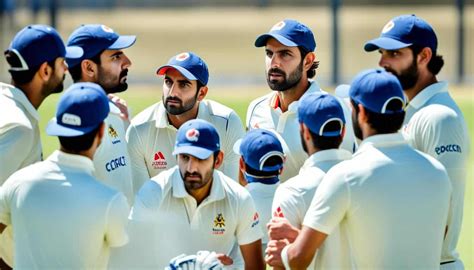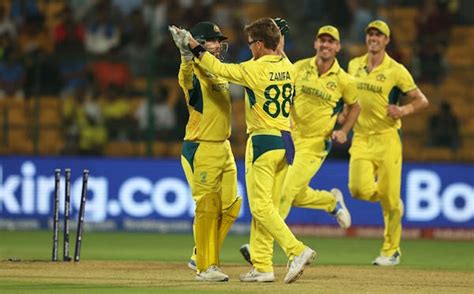Explore key factors influencing cricket team performance, leadership roles, team dynamics, training regimens, and metrics for success in this comprehensive analysis.Cricket, often regarded as a sport that embodies passion and strategy, requires more than just talent to achieve success on the field. In Analyzing The Strategies Behind Successful Cricket Teams, we delve into the myriad factors that contribute to a team’s triumph, from the leadership that guides the players to the training regimens that enhance performance. Each subheading in our exploration sheds light on key elements, such as the importance of team dynamics and the metrics used to measure success. Whether you are a cricket enthusiast, a coach, or someone keen to understand the intricacies of the game, this article aims to provide valuable insights into what makes cricket teams excel. Join us as we uncover the strategies that elevate teams from mere participants to champions.
Key Factors Influencing Successful Cricket Team Performance
When it comes to analyzing the dynamics of a successful cricket team, several key factors contribute significantly to their overall performance on the field. Understanding these factors can shed light on what distinguishes winning teams from the rest.
- Skill Level: The individual skills of the players, including batting, bowling, and fielding, are crucial. High levels of proficiency can lead to better performance during matches.
- Teamwork: Successful teams often display exceptional teamwork. This involves clear communication, mutual understanding, and the ability to work cohesively towards a common goal.
- Game Strategy: The strategic approach adopted by the team can significantly influence the outcome of matches. Teams that effectively analyze their opponents and adjust their game plans often find greater success.
- Mental Resilience: The psychological strength of a team is essential, particularly in high-pressure situations. Teams that possess mental toughness are more likely to perform well during critical moments in a game.
- Injury Management: Keeping players fit and minimizing injuries through effective medical management plays a key role in maintaining a competitive edge throughout the season.
- Adaptability: A successful cricket team is adaptable to varying conditions, such as pitch conditions, weather, and opposition tactics, allowing them to play effectively in diverse situations.
- Support Staff: The expertise of coaches, analysts, and support personnel can enhance player performance through tactical advice, training regimens, and mental conditioning.
- Performance Culture: Establishing a culture centered around excellence, accountability, and hard work fosters a positive environment conducive to achieving high performance levels.
These factors, when aligned effectively, create a strong foundation for a successful cricket team. Analyzing the interplay of these elements can offer valuable insights for teams aiming for excellence in the competitive world of cricket.
Analyzing The Role Of Leadership In Cricket Success
Leadership plays a pivotal role in the success of cricket teams, and this aspect cannot be overstated when analyzing the strategies behind winning performances. The captain and coaching staff are responsible for guiding players, making critical decisions, and fostering a strong team culture. A charismatic leader not only influences the performance on the field but also shapes the mental outlook and attitude of the players.
One critical function of a leader in cricket is to develop a clear vision and strategy for the team. This requires a deep understanding of the game, the strengths and weaknesses of both their own team and the opponents, and the conditions under which they are playing. Effective leaders often leverage analytics and data to formulate game plans that can turn matches in their favor.
Additionally, analyzing the leadership style of a captain can provide insight into how a team navigates challenges during a match. Some captains choose a more aggressive approach, while others may adopt a defensive mindset, depending on the game situation. The ability to adapt to different circumstances and maintain composure under pressure is a hallmark of exceptional leadership in cricket.
Another significant aspect is the relationship between the captain and the players. A good leader fosters open communication and trust, which promotes a more cohesive unit on the field. When players feel valued and understood, they are more likely to perform at their best. Leadership that emphasizes teamwork and collaboration can create an environment where all players contribute their skills and talents effectively.
Moreover, leadership extends beyond the captain. Coaches play a crucial role in shaping the strategies and skill development of players. Their guidance, especially during training, influences how well a team performs in competitive scenarios. Thus, strong leadership at all levels is essential for a cricket team striving for success.
Developing Strong Team Dynamics For On-Field Excellence
Team dynamics play a crucial role in the performance of a cricket team. Strong interpersonal relationships among team members can significantly enhance communication, trust, and collaboration on the field. Here are key aspects that contribute to developing strong team dynamics:
- Open Communication: Teams that foster an environment of open and honest communication can address issues more effectively and promote a healthy culture of feedback.
- Mutual Respect: Players must respect each other’s skills and contributions to foster a healthy atmosphere where everyone feels valued and motivated.
- Shared Goals: Establishing common objectives helps align individual efforts with team missions, encouraging players to work together towards a common purpose.
- Role Clarity: Clearly defining roles and responsibilities ensures that each player understands their contribution, reducing confusion and enhancing teamwork.
- Cohesion Building Activities: Engaging in off-field bonding activities can strengthen relationships among players, translating to better coordination during matches.
- Conflict Resolution Mechanisms: Implementing strategies to resolve disputes amicably and swiftly prevents misunderstandings from affecting performance.
By prioritizing these aspects, cricket teams can develop stronger on-field dynamics, fostering a collaborative environment that enhances performance and contributes to overall success. This is a vital step in analyzing the effectiveness of a team’s cohesion and collaboration during high-pressure situations.
| Aspect | Impact on Team Dynamics |
|---|---|
| Open Communication | Promotes transparency and quick problem-solving. |
| Mutual Respect | Enhances self-esteem and motivation among players. |
| Shared Goals | Aligns team efforts and fosters motivation. |
| Role Clarity | Reduces confusion and enhances individual accountability. |
| Cohesion Building Activities | Strengthens relationships and improves team chemistry. |
| Conflict Resolution Mechanisms | Prevents issues from escalating and affecting performance. |
By consistently focusing on these dynamics, cricket teams can not only enhance their on-field performance but also lay the groundwork for a culture of success and resilience.
Implementing Effective Training Regimens To Boost Performance
When it comes to cricket, the difference between a good team and a great team often lies in their training regimens. The implementation of effective training strategies is pivotal for enhancing player skills, teamwork, and overall performance on the field. Here are some key components that contribute to successful training programs:
- Tailored Fitness Programs: Each player has unique strengths and weaknesses. Crafting individualized fitness plans that focus on stamina, agility, and strength can significantly enhance players’ physical capabilities.
- Technical Skill Development: Regular drills focusing on batting, bowling, and fielding are crucial. Using technology, such as video analysis, can help players identify areas of improvement and track progress over time.
- Simulated Game Scenarios: Practicing in conditions that mimic actual match situations allows players to better prepare for the pressures of competition. This can include scenario-based training sessions that put players in challenging situations.
- Mental Conditioning: Cricket is as much a mental game as it is physical. Training regimens should incorporate mental resilience techniques, such as visualization and meditation, to prepare players for high-pressure moments.
- Regular Fitness Assessments: To ensure that the training regimen is effective, conduct periodic fitness assessments. This helps to track progress, identify areas needing improvement, and make necessary adjustments to the training plan.
- Team-Building Activities: A cohesive team often performs better. Regular team-building exercises can enhance camaraderie and trust among players, which is crucial for seamless on-field communication and collaboration.
analyzing the training regimens of successful cricket teams reveals that a multifaceted approach incorporating physical fitness, technical skills, mental toughness, and team cohesion is fundamental for boosting performance. By implementing these strategies, teams can foster a culture of continuous improvement and success on the cricket field.
Measuring Success: Metrics Used To Evaluate Cricket Teams
In the realm of cricket, the measurement of a team’s success is multifaceted and involves various metrics that encapsulate both individual and collective performance. Analyzing The capabilities of a team requires a comprehensive understanding of these metrics, as they provide insights into strengths, weaknesses, and areas for improvement.
| Metric | Description | Importance |
|---|---|---|
| Win/Loss Ratio | The number of wins divided by the number of losses. | This is a fundamental indicator of a team’s overall effectiveness in matches. |
| Batting Average | Total runs scored divided by the number of times out. | Averages reveal individual player consistency and contribute to understanding team performance. |
| Bowling Economy Rate | Runs conceded per over bowled. | This shows how well bowlers restrict the opposing team’s scoring. |
| Net Run Rate (NRR) | Difference between runs scored and runs conceded, adjusted over the total overs. | Essential in tournaments for ranking teams with similar points. |
| Player Contributions | Evaluation through runs scored, wickets taken, and fielding stats. | Provides insight into key players’ influence on game outcomes. |
These metrics serve as vital tools for coaches, analysts, and team management to perform in-depth evaluations and adjustments. Additionally, they play a significant role in talent recruitment, strategy formulation, and long-term planning, all essential components for sustaining success in cricket.
Frequently Asked Questions
What are the key strategies that contribute to the success of cricket teams?
Successful cricket teams often employ a combination of effective game strategies, including strong batting techniques, solid bowling plans, and exceptional fielding skills. Additionally, they focus on teamwork and communication both on and off the field.
How important is player selection in successful cricket strategies?
Player selection is crucial for successful cricket strategies. Teams must assess the skills, fitness levels, and mental resilience of players to ensure they fit the team’s strategy and dynamics.
What role does coaching play in developing successful team strategies?
Coaching plays a significant role by providing guidance on techniques, tactics, and game strategies. Coaches analyze opponents, inform player training, and help build team morale, which all contribute to on-field success.
How do successful teams manage player injuries?
Successful cricket teams have robust injury management protocols in place, including physical training, rehabilitation programs, and rest periods. This ensures that players remain fit and available for important matches.
What is the significance of mental conditioning in cricket?
Mental conditioning is essential in cricket, as it helps players cope with pressure and maintain focus during high-stakes situations. Strategies like visualization, mindfulness, and stress management are often employed.
How do successful teams analyze their opponents?
Successful teams utilize various methods, including video analysis, statistical modeling, and historical data review, to study opponents’ strengths, weaknesses, and playing patterns. This information informs their tactical approach during matches.
What impact does team culture have on cricket performance?
Team culture significantly impacts performance by fostering a positive environment that encourages collaboration, resilience, and accountability. A solid culture promotes trust among players and often leads to heightened team performance.









